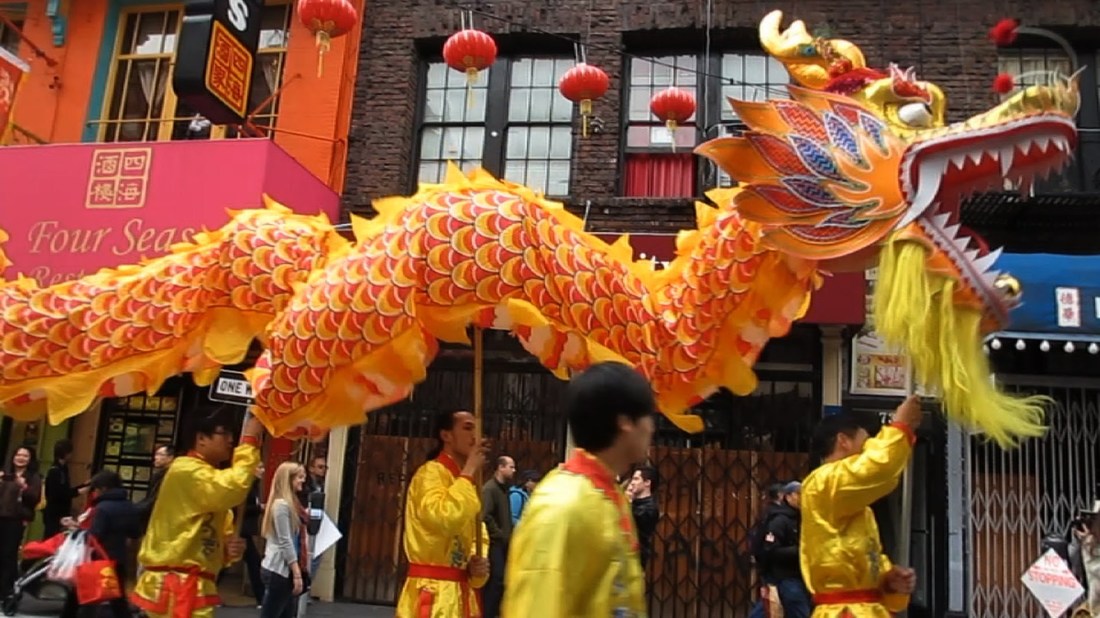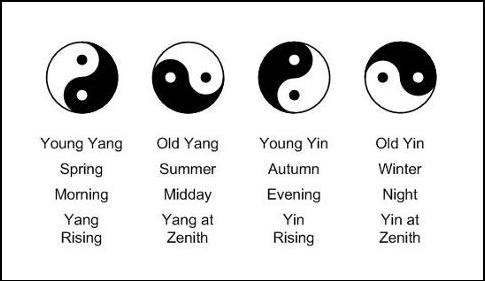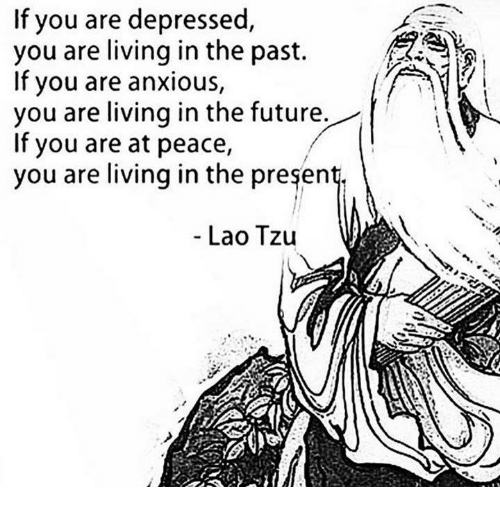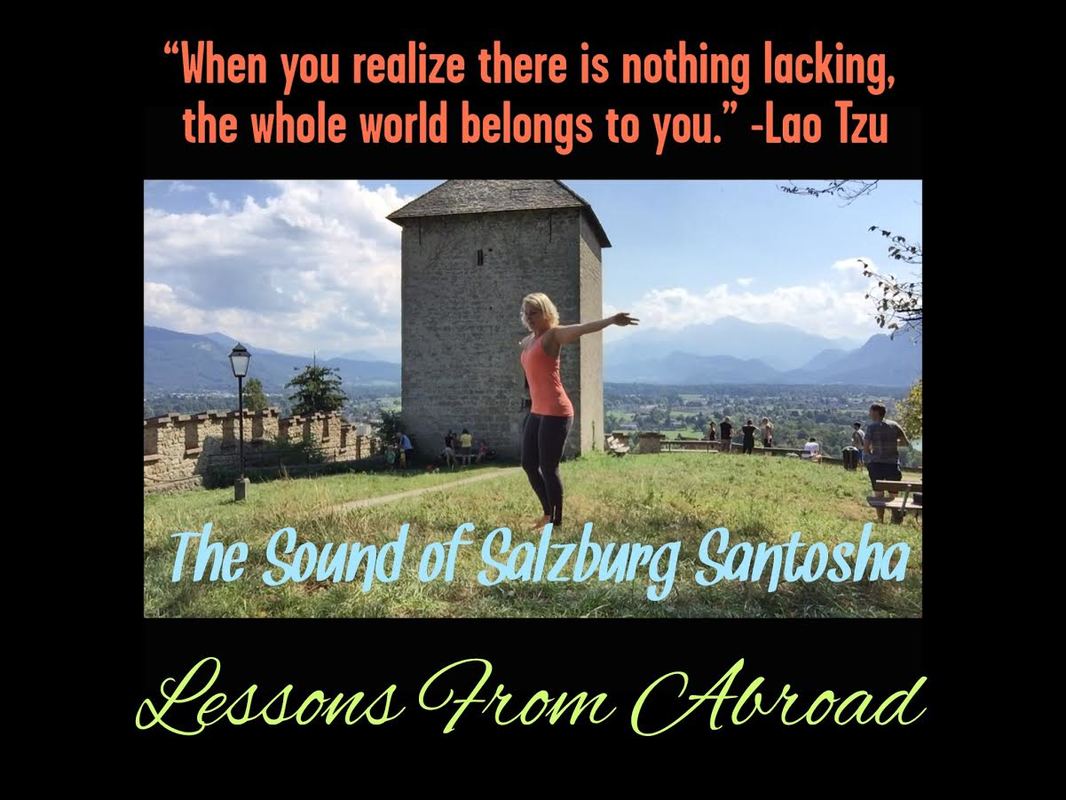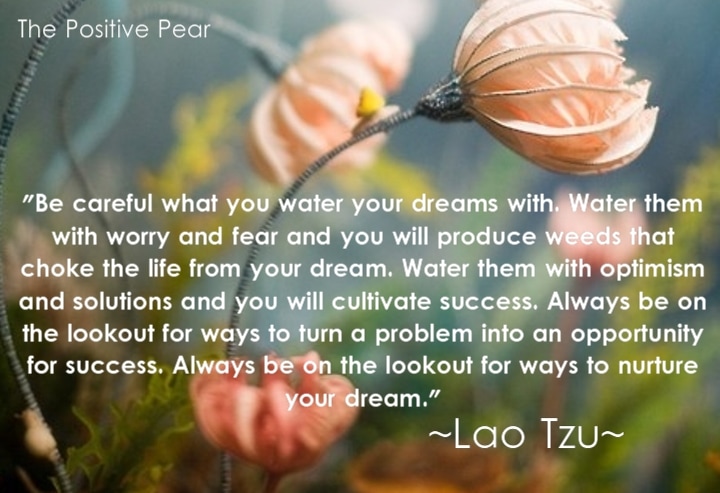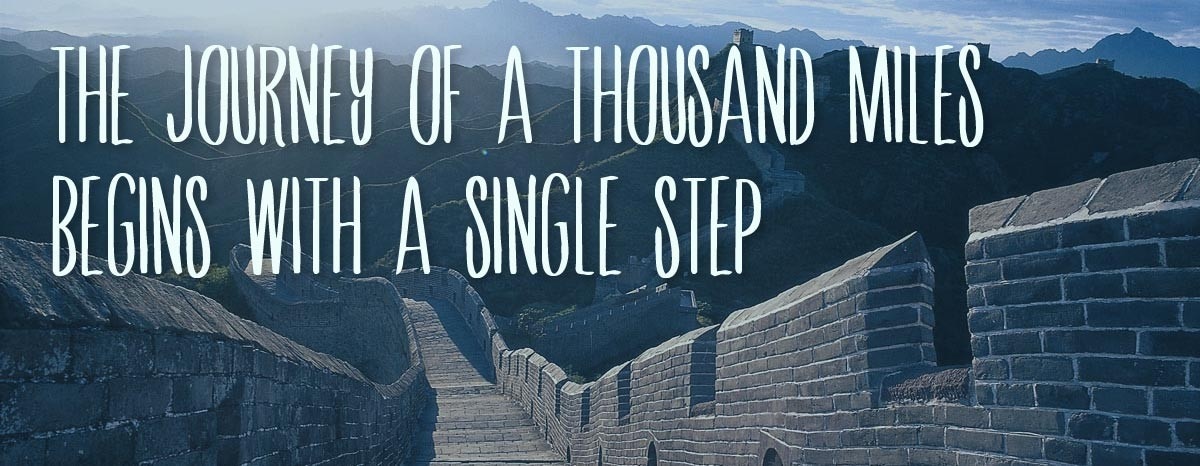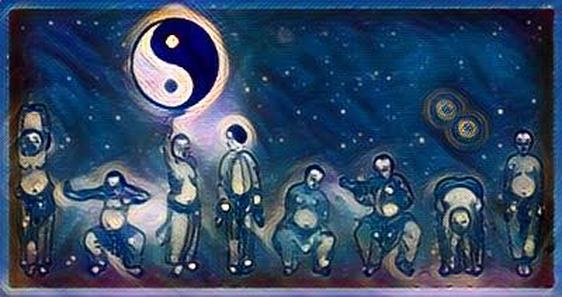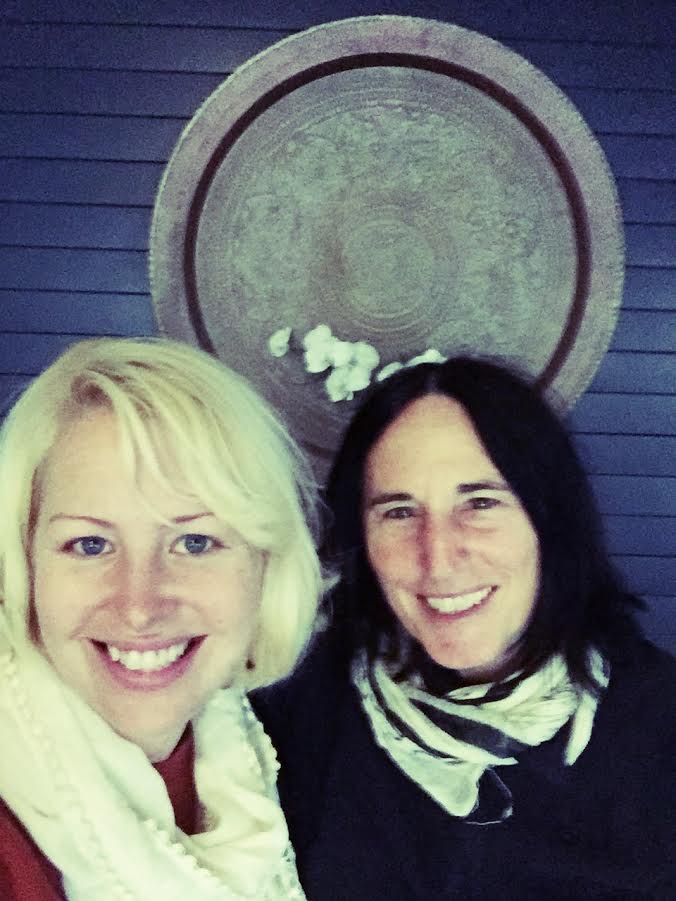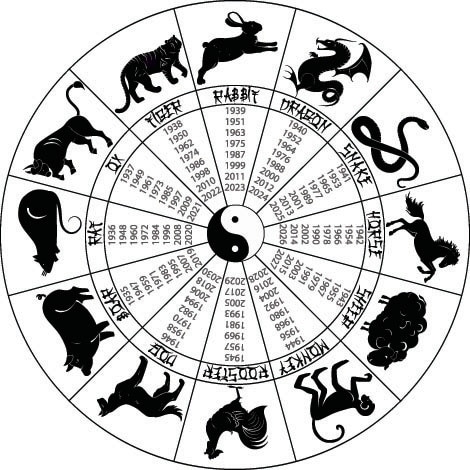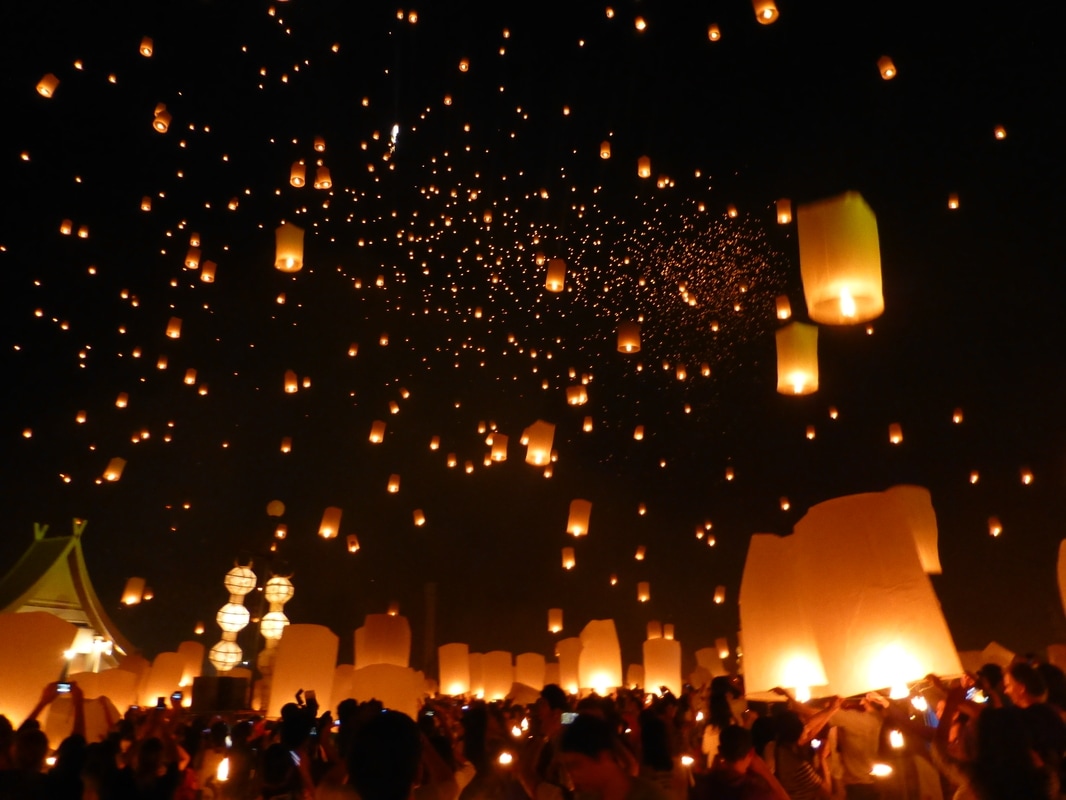Wishing you New Year Goodness!
Sshin-nyen haoww (Mandarin pronunciation)
Every year the Chinese culture, all around the world, celebrates this time of year with good luck rites, house cleaning, family feasts, and fireworks. The next few weeks are set aside as a time to honor household and heavenly deities as well as ancestors. Unlike our western Gregorian calendar, the Chinese calendar runs in accordance with lunar-solar observations; therefore, the date for the new year changes from year to year. This year, it starts on January 28th. Celebrations will occur the day before and continue until the Lantern Festival, the 15th day of the new year.
According to tradition, people must stay up late on New Year’s Eve to welcome the New Year, and then to let off fireworks to scare off ominous spirits and Nian, the New Year dragon monster. Chinese are careful of their actions on these two days as they will prophecy their upcoming year. In the first five days of the New Year, people eat long noodles to symbolize long life. On the 15th and final day of the New Year, round dumplings shaped like the full moon are shared as a sign of the family unit and of perfection (History.com). One legend states that hanging your hopes for the coming year on a Wishing Tree (synonymous with good luck and fortune) will encourage your dreams to come true. Further, some Chinese people refrain from regular routines such as hair and laundry washing in honor of the water god, celebrated on these days.
According to tradition, people must stay up late on New Year’s Eve to welcome the New Year, and then to let off fireworks to scare off ominous spirits and Nian, the New Year dragon monster. Chinese are careful of their actions on these two days as they will prophecy their upcoming year. In the first five days of the New Year, people eat long noodles to symbolize long life. On the 15th and final day of the New Year, round dumplings shaped like the full moon are shared as a sign of the family unit and of perfection (History.com). One legend states that hanging your hopes for the coming year on a Wishing Tree (synonymous with good luck and fortune) will encourage your dreams to come true. Further, some Chinese people refrain from regular routines such as hair and laundry washing in honor of the water god, celebrated on these days.
Chinese New Year Mini-Parade 2013 Chinatown San Francisco California
Photo Credit: You Tube
Photo Credit: You Tube
The Chinese culture is unique because it is not only one of the oldest civilizations in history, but also the longest continuous culture that has lasted for over 5,000 years and is still going today. The ancient Chinese people had invented paper and printing press that led to development of calligraphy and literature. They have made some huge contributions towards other notable inventions like the compass, umbrella, drums, flutes, harps, seismoscope, noodles, silk clothing, bank notes, acupuncture, and irrigation.
Further, the dual Yin-Yang system is approximately as old as China itself. It is the central theme of all Chinese systems of insight, and a key component in Chinese philosophy. Yin, being the female principle, and Yang the male principle. The combination and interaction of these two opposites is believed by the Chinese to cause all universal actions.
Yin generally refers to things that are relatively lower, colder, stiffer and slower: yang generally refers to things that are higher, hotter, flexible and quick. Yin represents the moon and night, while yang symbolizes the day and the sun. This circular symbol moves in accordance with the seasons.
In physical yoga practice, yin represents a forward fold and rounding of the spine, while yang is heart opening and arching. Imagine the flow of cat/cow movements or half Sun Salutations to observe this play of opposites. Patanjali’s Yoga Sutra in 400 C.E. (II-46) states “sthira sukham asanum” which means that “your asana should be steady and comfortable.” Stable is yang, comfortable is yin.
Further, the dual Yin-Yang system is approximately as old as China itself. It is the central theme of all Chinese systems of insight, and a key component in Chinese philosophy. Yin, being the female principle, and Yang the male principle. The combination and interaction of these two opposites is believed by the Chinese to cause all universal actions.
Yin generally refers to things that are relatively lower, colder, stiffer and slower: yang generally refers to things that are higher, hotter, flexible and quick. Yin represents the moon and night, while yang symbolizes the day and the sun. This circular symbol moves in accordance with the seasons.
In physical yoga practice, yin represents a forward fold and rounding of the spine, while yang is heart opening and arching. Imagine the flow of cat/cow movements or half Sun Salutations to observe this play of opposites. Patanjali’s Yoga Sutra in 400 C.E. (II-46) states “sthira sukham asanum” which means that “your asana should be steady and comfortable.” Stable is yang, comfortable is yin.
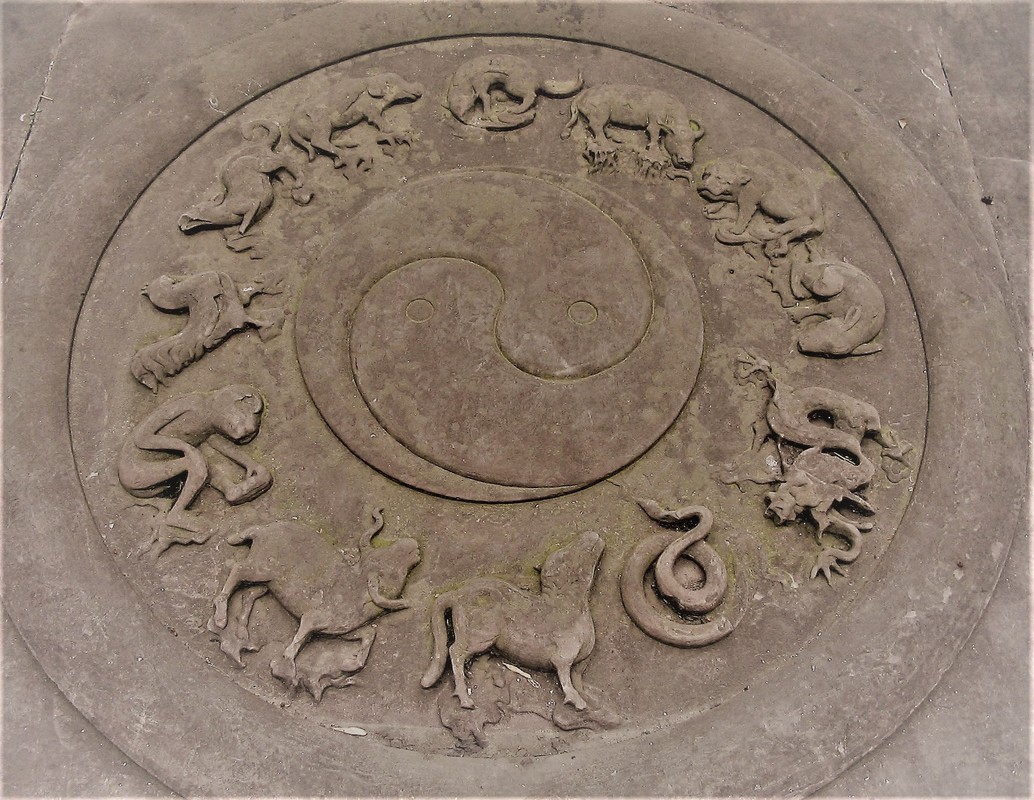
Chinese 12 Year Zodiac with Yin Yang in the Center
In contemporary yoga today, we can attend classes that focus on our yin or yang. Most Vinyasa or Power Flow classes build heat through standing and strengthening postures for Yang, while Yin Yoga is sometimes referred to as yoga for the joints, and involves sitting or laying down. I try to blend equal balance of both in my yoga classes.
How do you observe these opposite relationships in your life?
In the yoga lifestyle, we take a deeper look inward as we study our self, svadhaya, and improve our relationship within ourselves (niyamas) and with others (yamas). As I study ancient Chinese philosophy, I see wise words that connect our role as humans with society. Between 800 and 200 BCE, ancient China went through a time of deep political and social change and intellectual awakening. Three main religions or philosophies arose: Taoism, Confucianism, and Buddhism.
Confucianism holds that one should live with honor and morality in mind, treating others with respect, politeness, and kindness. Confucius preached the popular phrases, “Our greatest glory is not, in never falling, but in getting up every time we do” and “When anger rises, think of the consequences.” Further, like most Chinese philosophy, he showed a deep reverence for nature and the elements, “Everything has its beauty but not everyone sees it.”
In Taoism, the leader, Lao Tzu, emphasized that a universal force flows through all living beings (Qi) and respecting that force will lead us to a happy life. He also teaches the power of a controlled mind through some of my favorite philosophical quotes:
How do you observe these opposite relationships in your life?
In the yoga lifestyle, we take a deeper look inward as we study our self, svadhaya, and improve our relationship within ourselves (niyamas) and with others (yamas). As I study ancient Chinese philosophy, I see wise words that connect our role as humans with society. Between 800 and 200 BCE, ancient China went through a time of deep political and social change and intellectual awakening. Three main religions or philosophies arose: Taoism, Confucianism, and Buddhism.
Confucianism holds that one should live with honor and morality in mind, treating others with respect, politeness, and kindness. Confucius preached the popular phrases, “Our greatest glory is not, in never falling, but in getting up every time we do” and “When anger rises, think of the consequences.” Further, like most Chinese philosophy, he showed a deep reverence for nature and the elements, “Everything has its beauty but not everyone sees it.”
In Taoism, the leader, Lao Tzu, emphasized that a universal force flows through all living beings (Qi) and respecting that force will lead us to a happy life. He also teaches the power of a controlled mind through some of my favorite philosophical quotes:
Photo Credit: Sizzle
Photo Credit: The Positive Pear
Photo Credit: Journey of 1000 Miles
Buddhism emphasizes that the world is transient and is constantly changing. In this transient world, sorrow is bound to come. By following the path of moderation, humans can raise above these worldly troubles.
As one story goes, Da Mo Bodhidharma, came from India to preach Buddhism in China during the Liang dynasty (502-557 A.D.). He arrived at the Shaolin monastery and was shocked by the state of decline and the weakened physical state of the brotherhood. He decided to teach yoga to the monks in order to strengthen and develop the vitality necessary for their spiritual cultivation. Within the next century, his yoga was then absorbed and integrated into the Chinese indigenous form of physical/mental practice called qigong. Qigong is literally translated as “energy work” (Huffington Post).
As one story goes, Da Mo Bodhidharma, came from India to preach Buddhism in China during the Liang dynasty (502-557 A.D.). He arrived at the Shaolin monastery and was shocked by the state of decline and the weakened physical state of the brotherhood. He decided to teach yoga to the monks in order to strengthen and develop the vitality necessary for their spiritual cultivation. Within the next century, his yoga was then absorbed and integrated into the Chinese indigenous form of physical/mental practice called qigong. Qigong is literally translated as “energy work” (Huffington Post).
However, some roots of qigong in ancient Chinese culture date back more than 4,000 years; it is also believed that knowledge about qigong was passed from adept master to student in elite unbroken lineages, typically with secretive and traditions of training and oral communication, and with an emphasis on meditative practice by scholars or dynamic practice by the working people.
According to Taoist, Buddhist, and Confucian philosophy, qigong allows access to higher realms of awareness, awakens one's "true nature", and helps develop human potential. Qigong practice typically involves moving meditation, coordinating slow flowing movement, deep rhythmic breathing, and calm meditative state of mind. Now practiced throughout China and worldwide, qigong helps to bolster the immune system, repair damages caused by disease, balance the body’s energy flow, and create a stronger and more adaptable body.
According to Taoist, Buddhist, and Confucian philosophy, qigong allows access to higher realms of awareness, awakens one's "true nature", and helps develop human potential. Qigong practice typically involves moving meditation, coordinating slow flowing movement, deep rhythmic breathing, and calm meditative state of mind. Now practiced throughout China and worldwide, qigong helps to bolster the immune system, repair damages caused by disease, balance the body’s energy flow, and create a stronger and more adaptable body.

As I have researched deeper into these yoga roots in this ancient Chinese practice, I decided that I must experience qigong to see how it relates to the Western contemporary yoga that I have known for the last 6 years.
I attended the Wu Qigong 7am class with Jill Van Bodegom-Smith at Breakthrough Healing Arts in Pacific Beach area of San Diego, California.
Jill’s wealth of knowledge and expertise in Qigong sent me on a beautiful journey full of imagery and loving energy. Eight qigong members of this community all warmly greeted me with smiles and introductions this cold and rainy morning of January 19th.
We started in a standard standing position (yang) similar to tadasana, mountain pose. Jill directed us to "lengthen our spine like there's a weight on our tailbone, feeling extra space between each vertebra". We moved our hands around with our breath as if we were holding a ball, twisting from right to left as our hands drifted up as if to shield us from the light of the sun. This pattern developed into a petting motion, as if stroking a beautiful and exotic peacock, the symbol of divinity and beauty within all of us. We also performed some holding poses similar to crescent side bend (Indudalasana), forward fold (Uttanasana), and chair pose (Utkatasana).
Then we scanned the room for qi, life force, energy all around us. When I closed my eyes, I felt something powerful in this room of loving people. Many of whom came to this studio for a deep physical healing from conditions and illnesses, others for emotional healing, and some of us to find a deeper inspiration and oneness with the Universe.
With slow, deep breathing, we began to “take down the heavens,” by inhaling and moving our arms out and up, then exhaling very slowly through our heart’s center. Jill led us through a visualization of love and white light washing over us, like hot wax being poured onto our bodies, bringing relaxation (yin). By pulling an imaginary thin silver line with our fingertips, we strengthened our shoulders from center out to the length of our arms.
With bend knees, we brought healing to our kidneys by shifting our weight from side to side through large circles with our torsos. With solid grounding through our feet, we imagined our connection with mother earth and bringing her energy up though our legs and the water element flowed back down through our arms.
At the close of the class, we came back to our loving intention as we rubbed our belly in circles of unification and oneness, the key concept within the word, yoga.
There is much more to learn and I highly recommend trying Qigong at Breakthrough Healing, Yoga One San Diego, or at a studio in your local city. I aim to incorporate some of this principles into my future home yoga practice and classes that I teach in the future.
I attended the Wu Qigong 7am class with Jill Van Bodegom-Smith at Breakthrough Healing Arts in Pacific Beach area of San Diego, California.
Jill’s wealth of knowledge and expertise in Qigong sent me on a beautiful journey full of imagery and loving energy. Eight qigong members of this community all warmly greeted me with smiles and introductions this cold and rainy morning of January 19th.
We started in a standard standing position (yang) similar to tadasana, mountain pose. Jill directed us to "lengthen our spine like there's a weight on our tailbone, feeling extra space between each vertebra". We moved our hands around with our breath as if we were holding a ball, twisting from right to left as our hands drifted up as if to shield us from the light of the sun. This pattern developed into a petting motion, as if stroking a beautiful and exotic peacock, the symbol of divinity and beauty within all of us. We also performed some holding poses similar to crescent side bend (Indudalasana), forward fold (Uttanasana), and chair pose (Utkatasana).
Then we scanned the room for qi, life force, energy all around us. When I closed my eyes, I felt something powerful in this room of loving people. Many of whom came to this studio for a deep physical healing from conditions and illnesses, others for emotional healing, and some of us to find a deeper inspiration and oneness with the Universe.
With slow, deep breathing, we began to “take down the heavens,” by inhaling and moving our arms out and up, then exhaling very slowly through our heart’s center. Jill led us through a visualization of love and white light washing over us, like hot wax being poured onto our bodies, bringing relaxation (yin). By pulling an imaginary thin silver line with our fingertips, we strengthened our shoulders from center out to the length of our arms.
With bend knees, we brought healing to our kidneys by shifting our weight from side to side through large circles with our torsos. With solid grounding through our feet, we imagined our connection with mother earth and bringing her energy up though our legs and the water element flowed back down through our arms.
At the close of the class, we came back to our loving intention as we rubbed our belly in circles of unification and oneness, the key concept within the word, yoga.
There is much more to learn and I highly recommend trying Qigong at Breakthrough Healing, Yoga One San Diego, or at a studio in your local city. I aim to incorporate some of this principles into my future home yoga practice and classes that I teach in the future.
I absolutely loved this experience as I left feeling full of love and connectedness within my body and with the Universe. I appreciate the mention of some of the elements: earth, water, and air as the characteristics of each element, its strength, and compatibility with other elements are fundamental and critical in Chinese Astrology as well as the study of Calendar Science in ancient China. These elements were weighted for their strength and weakness during each of the four seasons. Wood is the strongest in spring, Fire is the strongest in summer, Earth is the strongest during the season transitions, etc (Chinese Fortune Calendar).
The earliest depictions of the 12 Zodiac animals appear in tomb-ceiling paintings dated to 533 BC with a Yin Yang symbol in the center, of course. Some animals are an odd number which represents Yang, while others are even numbered for Yin.
Yang: (1) Rat, (3) Tiger, (5) Dragon, (7) Horse, (9) Monkey, (11) Dog
Yin: (2) Ox, (4) Rabbit, (6) Snake, (8) Sheep, (10) Rooster, (12) Pig
Each year a different animal is celebrated according to your birth year. But according to Chinese belief, the year of your sign is believed to be one of the most unlucky years of your life. This year, we celebrate the year of the Rooster. If you were born on a year of the rooster, you are characterized as being honest, energetic, intelligent, flexible, hardworking, resourceful, confident, and talented (Telegraph).
The earliest depictions of the 12 Zodiac animals appear in tomb-ceiling paintings dated to 533 BC with a Yin Yang symbol in the center, of course. Some animals are an odd number which represents Yang, while others are even numbered for Yin.
Yang: (1) Rat, (3) Tiger, (5) Dragon, (7) Horse, (9) Monkey, (11) Dog
Yin: (2) Ox, (4) Rabbit, (6) Snake, (8) Sheep, (10) Rooster, (12) Pig
Each year a different animal is celebrated according to your birth year. But according to Chinese belief, the year of your sign is believed to be one of the most unlucky years of your life. This year, we celebrate the year of the Rooster. If you were born on a year of the rooster, you are characterized as being honest, energetic, intelligent, flexible, hardworking, resourceful, confident, and talented (Telegraph).
Tianguan is the Taoist god responsible for good fortune. His birthday falls on the fifteenth day of the first lunar month at the first full moon. Therefore, on that day, the New Year festivities come to a close with a special Lantern Festival to decline the darkness of winter and move into the night as a community with human-made light. People create paper lanterns to symbolize the sun, light, warmth, and a physical prayer to the Sun for it to come back.
The lanterns' artwork vividly demonstrates traditional Chinese images, such as fruits, flowers, birds, animals, people, and buildings. Lighting lanterns is a way for people to pray that they will have smooth futures and express their best wishes for their families (China Highlights). This marks the beginning of Spring. After the Lantern Festival, Chinese New Year taboos are no longer in effect, and all New Year decorations are taken down.
The lanterns' artwork vividly demonstrates traditional Chinese images, such as fruits, flowers, birds, animals, people, and buildings. Lighting lanterns is a way for people to pray that they will have smooth futures and express their best wishes for their families (China Highlights). This marks the beginning of Spring. After the Lantern Festival, Chinese New Year taboos are no longer in effect, and all New Year decorations are taken down.
Photo Credit: The Places Liz Goes
Wishing you 'Happiness and prosperity!'
In Mandarin: /gong-sshee faa-tseye/
